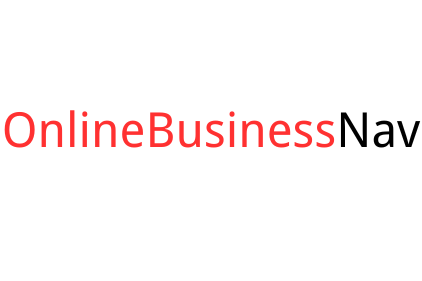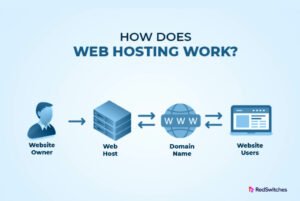Introduction

How To Start Online Business From Home With OnlineBusinessNav – how to start online business from home for free Learn How To Start Online Business From Home with OnlineBusinessNav ,Starting an online business from the comfort of your home can be both exciting and daunting. With the right guidance, however, it becomes a journey filled with learning and success. OnlineBusinessNav offers comprehensive insights and practical tips to help you embark on this entrepreneurial path.
Learn how to start an online business from both a thought level and an action level, In OnlineBusinessNav includes every aspect you will need on your way to online business ,fr.
Table of Contents
Understanding the Basics of Online Business
An online business operates on the internet, offering products or services to a global audience. The benefits of running a business from home include flexible hours, lower overhead costs, and the potential for a wide customer base.
How To Start Online Business From Home-Identifying Your Niche(Step 1)
Choosing the right niche is crucial. It should align with your interests and market demand. Researching trends and understanding your passions can guide you in this decision-making process.
Identifying your niche involves finding a specialized area or market segment where you can excel and differentiate yourself or your business. This process requires an understanding of your strengths, interests, and the market needs. Here are some steps to help you identify your niche:
- Assess Your Strengths and Passions: Reflect on what you are good at and what you enjoy doing. Your niche should align with your skills and interests to ensure long-term commitment and satisfaction.
- Research Market Needs: Look for gaps in the market or underserved areas. Understanding customer needs and problems that aren’t currently being addressed effectively can lead to a profitable niche.
- Analyze Competition: Investigate what your competitors are doing and identify areas they are overlooking. This can help you find a niche that is less saturated.
- Consider Market Trends: Stay informed about the latest trends in your industry. A rising trend can offer opportunities for niche markets.
- Test Your Idea: Before fully committing to a niche, test your concept with a small audience or a pilot project. This will give you insights into its viability and potential adjustments needed.
- Refine Your Focus: Based on your research and testing, narrow down your niche. A well-defined niche will help you target your marketing efforts more effectively.
- Evaluate Profitability: Ensure that your chosen niche is financially viable. It should have enough demand and the potential for profit.
- Build Expertise: Once you’ve identified your niche, work on becoming an expert in that area. This will help in building credibility and attracting customers.
Remember, the key to a successful niche is the intersection of what you love, what you’re good at, and what the market needs. It’s also important to be flexible and adapt as market conditions change.
How To Start Online Business From Home-Market Research and Analysis(Step 2)
Knowing your target audience and competitors is key. Analyzing market trends and consumer behavior helps tailor your business to meet specific needs.
Market research and analysis are essential processes for understanding the dynamics of a particular market and making informed business decisions. Here’s a breakdown of what these processes typically involve:
- Define the Objective: Clearly define what you want to learn from your market research. This could be understanding customer preferences, market trends, competition, pricing strategies, etc.
- Identify Your Target Market: Determine who your potential customers are. This involves segmenting the market based on factors like age, gender, income, location, lifestyle, etc.
- Choose Your Research Methods: There are two main types of market research – primary and secondary. Primary research involves collecting new data directly from sources (through surveys, interviews, etc.), while secondary research involves analyzing existing data.
- Collect Data: For primary research, design and distribute surveys, conduct interviews or focus groups, and gather observations. For secondary research, look for existing reports, studies, industry analyses, etc.
- Analyze the Data: Process the collected data to extract meaningful insights. Look for patterns, trends, and correlations. Use statistical tools and software for complex analysis.
- Competitive Analysis: Study your competitors to understand their strategies, strengths, weaknesses, and market position. This can help you identify opportunities and threats in the market.
- SWOT Analysis: Conduct a SWOT (Strengths, Weaknesses, Opportunities, Threats) analysis to evaluate the internal and external factors that can impact your business.
- Understand Consumer Behavior: Analyze the needs, preferences, and behavior of your target market. This includes understanding how they make purchasing decisions.
- Identify Market Trends: Stay informed about the latest trends that could impact your market. This can include technological advancements, regulatory changes, social trends, etc.
- Reporting and Decision Making: Compile the findings into a comprehensive report. Use these insights to make informed decisions about your business strategy, marketing, product development, and other areas.
Effective market research and analysis help businesses understand their environment, reduce risks, identify opportunities, and make data-driven decisions. It’s important to approach this process systematically and be prepared to adapt your strategies based on the insights gained.
How To Start Online Business From Home-Building Your Business Plan(Step 3)
A clear business plan sets the foundation. It should outline your business goals, financial strategies, and a roadmap for growth.
Building a business plan is a crucial step in laying the foundation for a successful venture. It serves as a roadmap for your business, outlining your goals, strategies, and how you plan to achieve them. Here’s a guide to help you create a comprehensive business plan:
- Executive Summary: This is an overview of your business plan, highlighting the key points. Include your business name, location, the products or services you offer, and the purpose of your business plan.
- Company Description: Provide detailed information about your business. Explain what you do, the market needs you fulfill, and the competitive advantages your business has.
- Market Analysis: Demonstrate your understanding of your industry and market. Include details about your target market, industry trends, market size, and expected growth. Analyze your competitors, highlighting their strengths and weaknesses.
- Organization and Management: Describe your business structure (e.g., sole proprietorship, partnership, corporation). Include information about the ownership, management team, and qualifications of key personnel.
- Products or Services: Detail the products or services you offer. Explain how they benefit your customers, their life span, and how they compare to existing market offerings.
- Marketing and Sales Strategy: Outline how you plan to attract and retain customers. This should include your pricing strategy, advertising and promotions, sales process, and distribution plan.
- Funding Request: If you are seeking financing, specify the amount of funding you need over the next five years and how you intend to use it.
- Financial Projections: Provide a financial outlook for the next five years. Include forecasted income statements, balance sheets, cash flow statements, and capital expenditure budgets. If you have existing data, include historical financial statements.
- Appendix: An optional section that can include resumes, permits, lease agreements, legal documentation, and other pertinent information.
- Review and Revise: Regularly review and update your business plan to reflect changes in the market, your business, or financial projections.
Remember, a well-crafted business plan not only helps in securing funding and attracting investors but also serves as a guide in managing your business and tracking your growth. It should be clear, concise, and well-organized, providing all necessary information in an easy-to-understand format.
Legalities and Formalities
Understanding the legal requirements and registering your business are vital steps. This ensures your business operates within legal boundaries.
How To Start Online Business From Home-Creating Your Online Presence (Step 4)
A strong online presence, including a well-designed website and active social media profiles, is essential in today’s digital age.
Check below the most popular Content Management Systems (CMS) around the world to build your Online Presence :
- WordPress: By far the most widely used CMS, WordPress is known for its ease of use, flexibility, and a vast library of themes and plugins. It powers a significant percentage of websites on the internet and is used for everything from small personal blogs to large corporate websites.
- Joomla: Joomla is another popular CMS, appreciated for its robustness and flexibility. It offers a range of features and extensions and is used for various types of websites, including e-commerce and social networking sites.
- Drupal: Known for its strong security features, Drupal is a preferred choice for many government and educational institutions’ websites. It is more complex than WordPress and Joomla but offers extensive customization options for more technical users.
- Magento: While Magento is specifically an e-commerce platform, it’s often considered within the CMS category due to its content management capabilities. It’s a powerful platform for online stores and offers a range of features and customization options.
- Shopify: Another e-commerce-focused platform, Shopify, has gained popularity for its user-friendly interface and ease of setup, making it a go-to choice for small to medium-sized e-commerce businesses.
- Wix: Wix is a web development platform that allows users to create websites through a drag-and-drop interface. It’s known for its ease of use and is popular among small businesses and individuals.
- Squarespace: Similar to Wix, Squarespace is a website builder that offers a range of templates and a user-friendly interface. It’s popular among creatives and small businesses for its sleek designs and ease of use.
- Weebly: Weebly is another user-friendly website builder, which offers a drag-and-drop interface and is often used by small businesses and individuals for its simplicity and ease of use.
The popularity of these CMS platforms can vary based on the specific needs of the website owners, such as the type of site being built, the level of customization required, and the technical expertise of the user. WordPress remains the leader due to its versatility, large community, and extensive range of plugins and themes.
How To Start Online Business From Home-Digital Marketing Strategies(Step 5)
Effective digital marketing involves understanding SEO, creating valuable content, and utilizing social media platforms to engage with your audience.
Digital marketing strategies are essential for businesses to effectively reach and engage with your audience online. These strategies encompass a variety of tactics and channels, each suited to different goals and target audiences. Here’s an overview of some key digital marketing strategies:
- Search Engine Optimization (SEO): This involves optimizing your website and content to rank higher in search engine results pages (SERPs) for relevant keywords. This increases organic (non-paid) traffic to your site.
- Content Marketing: Creating and sharing valuable content (like blogs, videos, infographics) to attract and retain a clearly-defined audience. Content marketing is often used to establish expertise, build brand awareness, and keep your business top of mind.
- Social Media Marketing: Using platforms like Facebook, Twitter, Instagram, LinkedIn, and TikTok to connect with your audience, build your brand, increase sales, and drive website traffic. This includes publishing great content, listening to and engaging your followers, analyzing your results, and running social media advertisements.
- Email Marketing: Sending emails to prospects and customers. Effective email marketing converts prospects into customers and turns one-time buyers into loyal, raving fans. This involves segmenting your audience, personalizing messages, and creating tailored campaigns.
- Pay-Per-Click (PPC) Advertising: A model of internet marketing where you pay a fee each time one of your ads is clicked. Google Ads is one of the most common PPC platforms, but social media sites like Facebook also offer PPC options.
- Affiliate Marketing: This is a performance-based marketing strategy where you pay commissions to external websites for traffic or sales generated from their referrals. It’s essentially a way of outsourcing part of your marketing efforts.
- Influencer Marketing: Partnering with influencers (people with a large and/or engaged online following) to promote your products or services. This is particularly effective on social media platforms.
- Mobile Marketing: Reaching customers through mobile devices, such as smartphones and tablets. This includes mobile-optimized advertising, apps, SMS/MMS marketing, and social media.
- Video Marketing: Using video content to promote your brand, products, or services. Platforms like YouTube, social media channels, and your own website are great places to leverage video marketing.
- Web Analytics: Using tools like Google Analytics to track and analyze how visitors interact with your website. This data helps you understand your audience, refine your strategy, and improve the user experience.
Each of these strategies can be effective, but it’s important to choose the ones that align best with your business goals, target audience, and resources. A successful digital marketing strategy often involves a combination of these tactics, continuously optimized based on analytics and performance data.
How To Start Online Business From Home-Product Development and Sourcing(Step 6)
Developing a unique product or service that meets customer needs is at the heart of your business. If sourcing is required, finding reliable suppliers is key.
How To Start Online Business From Home-Setting Up E-Commerce Solutions(Step 7)
Choosing the right e-commerce platform and ensuring secure payment processing are critical for online transactions.
some of the most popular payment platforms globally were:
- PayPal: One of the most widely recognized and used payment systems worldwide, PayPal offers secure and convenient online transactions for both personal and business purposes.
- Stripe: Popular among online businesses, Stripe is known for its powerful and flexible API, allowing businesses to integrate various payment methods and customize their checkout experiences.
- Square: Particularly favored by small businesses and brick-and-mortar stores, Square offers a range of solutions including point-of-sale systems and online payment processing.
- Alipay: A leading payment platform in China, Alipay is a part of the Alibaba group and is widely used for both online and offline transactions in the Chinese market.
- WeChat Pay: Another dominant player in China, WeChat Pay is integrated into the WeChat app, a multi-purpose messaging, social media, and mobile payment app.
- Amazon Pay: Leveraging Amazon’s vast user base, Amazon Pay allows users to pay for goods and services on third-party websites using the payment methods stored in their Amazon accounts.
- Apple Pay: A mobile payment and digital wallet service by Apple Inc., Apple Pay allows users to make payments in person, in iOS apps, and on the web using Safari.
- Google Pay: This is a digital wallet platform and online payment system developed by Google to power in-app, online, and in-person contactless purchases on mobile devices.
- Venmo: Popular in the United States, Venmo is a mobile payment service owned by PayPal. It’s widely used for splitting bills, paying friends, and other peer-to-peer transactions.
- Mastercard and Visa: While not payment platforms in the traditional sense, the global reach and acceptance of Mastercard and Visa make them integral to the world’s payment ecosystem. They power countless transactions daily through their networks.
These platforms vary in popularity based on regional preferences, the type of transactions they support, and their integration capabilities with other systems. For instance, PayPal, Stripe, and Square are extensively used in many countries for diverse types of transactions, while Alipay and WeChat Pay dominate the Chinese market. The choice of platform often depends on the user’s location, the nature of the business, and the specific needs of the customers.
How To Start Online Business From Home-Customer Service Excellence
Providing exceptional customer service builds trust and loyalty. Effective communication and addressing customer needs promptly are important.
Scaling Your Business
Growth strategies include expanding your product line and exploring new markets. Consistent evaluation and adaptation are necessary for scaling.
Challenges and Solutions
Every business faces challenges. Identifying potential issues and having solutions ready is part of effective management.
Success Stories
Looking at successful online businesses provides inspiration and valuable lessons.
Conclusion
Starting an online business requires dedication and hard work, but with the right approach and resources like OnlineBusinessNav, you can create a thriving business from the comfort of your home.
FAQs
What are the first steps in starting an online business?
From the Ideological level -Make up your mind.
From the Action level- Identify your niche, conduct market research, and create a business plan.
How important is digital marketing for an online business?
It’s crucial as it helps in reaching a wider audience and building brand awareness.
Can I run an online business while working a full-time job?
Yes, many entrepreneurs start their online businesses as side ventures.
What are some common challenges in starting an online business?
Challenges include market competition, finding the right niche, and effective marketing.
How long does it take to see profits from an online business?
This varies, but with a solid plan and consistent effort, you can see results within a few months to a year.



[…] Start your online business from build your online presence with Hosinger , Learn more on How To Start Online Business From Home-Creating Your Online Presence (Step 4) […]
[…] are one step closer to your online business success ,you may be interested in learn more about How to Start an Online Business from Home […]